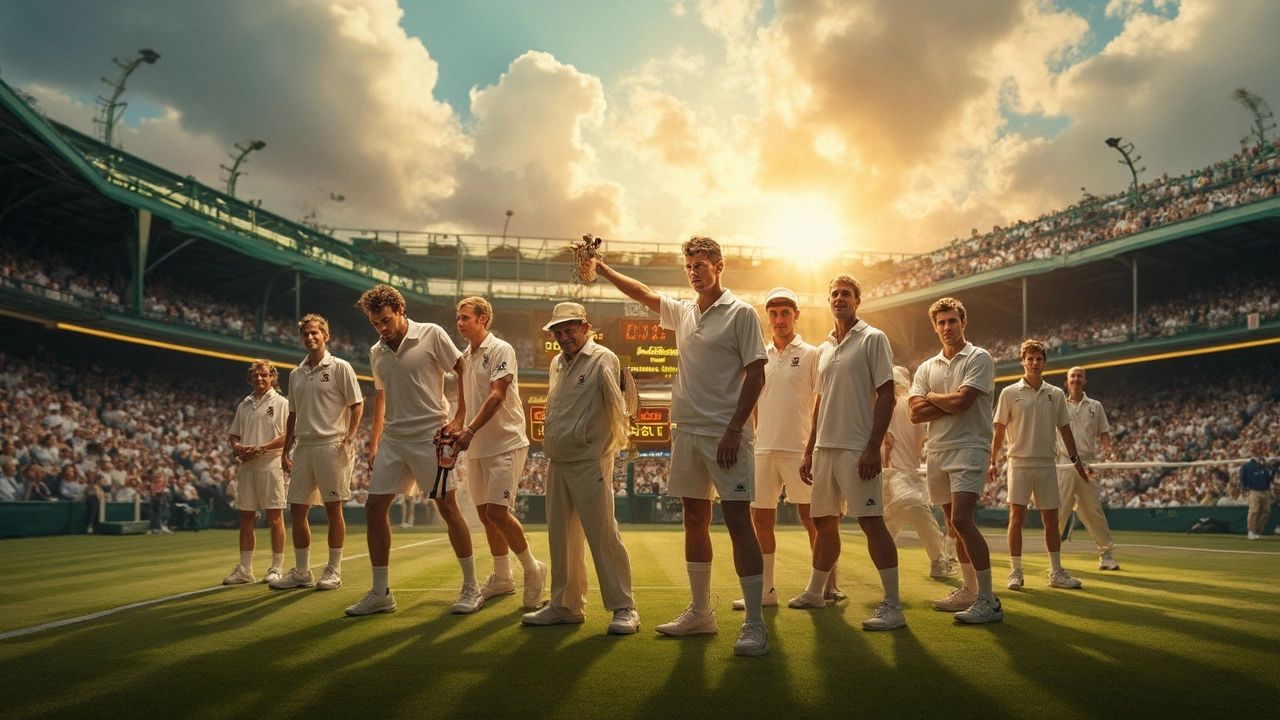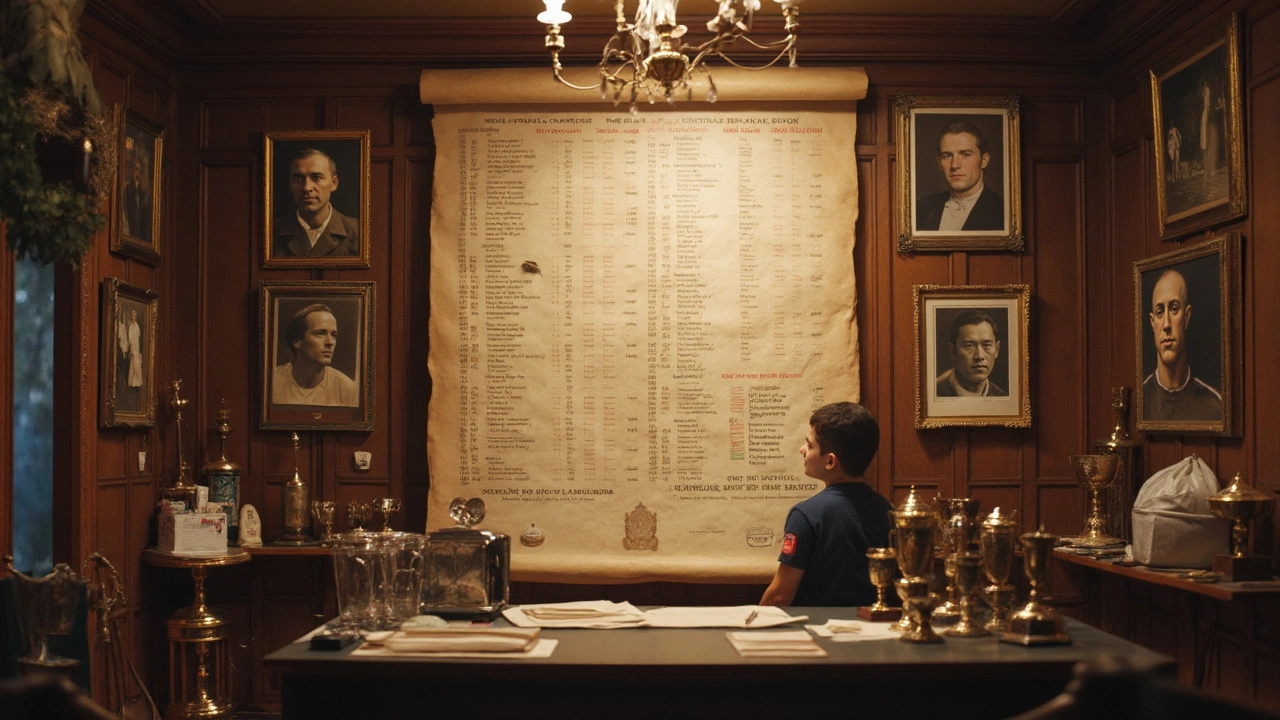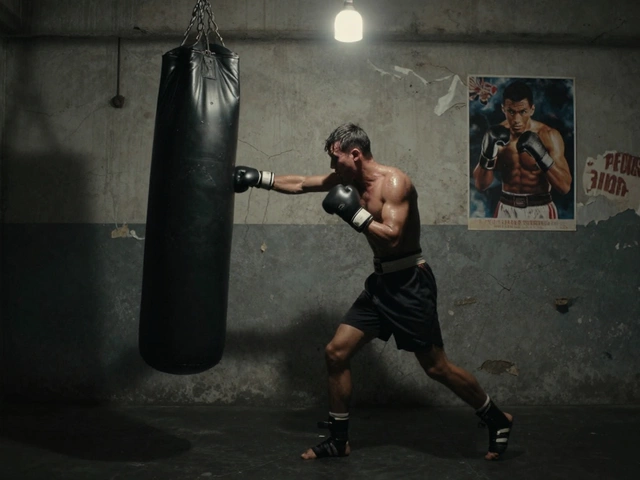
Tennis Tournaments May 4, 2025
Most Men's Grand Slam Titles in Tennis History: Who Holds the Record?
If you’re curious about who’s been the king of men’s tennis majors, you’re not alone. Fans keep score not just for individual matches, but for the biggest titles too: the Grand Slams. When someone asks, “Who has the most men’s majors in tennis?” they’re talking about total singles titles from the Australian Open, French Open, Wimbledon, and US Open. These aren’t just any trophies—they’re the ones every pro dreams of lifting as a kid.
Right now, Novak Djokovic sits on top. He took the lead in 2023 and just kept going, racking up 24 Grand Slam singles titles by May 2025. This isn’t just a random stat—it’s tennis legend territory. A decade ago, people thought nobody would get past Roger Federer or Rafael Nadal, both of whom owned this record for a while. Djokovic’s consistency at the majors, especially deep into his 30s, has left fans and experts almost stunned.
- Grand Slam Majors: The Basics
- Who Leads the Race: Current Record Holders
- How the Record Has Changed Over Time
- Hidden Stats and Surprising Facts
- Why Grand Slam Counts Matter
- Chasing the Next Milestone
Grand Slam Majors: The Basics
If you want the inside scoop on men's tennis majors, here's where it all starts. The term “Grand Slam” covers four tournaments: the Australian Open, French Open, Wimbledon, and the US Open. These events are the biggest deals in tennis—players can get rich, famous, and even legendary just by winning one. But grabbing a bunch? That’s how you cement a spot in tennis history.
Each Slam is a bit different. The Australian and US Opens are played on hard courts—those are usually fast and favor powerful hitters. The French Open is on clay, so you get slower points, tricky movement, and long rallies. Wimbledon’s grass makes the ball skid and rewards bold players who can handle the quick pace. Winning on all these surfaces? That’s the type of versatility only top legends have.
Grand Slams are held every year, and it’s one shot for each Slam—no do-overs. To win one, a player must beat seven opponents over two weeks, in best-of-five sets for men. The draw is brutal and packed with talent. That’s why piling up Grand Slam titles takes supreme skill, mental strength, and a bit of luck with injuries and matchups.
Here’s a quick run-down of these four tournaments and how long they’ve been part of tennis history:
| Tournament | Started | Surface (2025) |
|---|---|---|
| Australian Open | 1905 | Hard |
| French Open | 1891 | Clay |
| Wimbledon | 1877 | Grass |
| US Open | 1881 | Hard |
If someone tells you they’ve won a Grand Slam, ask which one—they’re all different, and some players shine on one surface more than the others. That’s why a guy who wins majors on all four is a cut above the rest in tennis history.
Who Leads the Race: Current Record Holders
If we're talking about who dominates the men's tennis majors, Novak Djokovic is the name you can't miss. As of May 2025, Djokovic stands alone with 24 Grand Slam singles titles. That's more than any other male player ever—one ahead of Rafael Nadal, who holds 22, and three ahead of Roger Federer, who finished his career with 20.
To get a clearer picture, here's a quick breakdown of the modern leaders for Grand Slam singles titles:
| Player | Grand Slam Titles | Australian Open | French Open | Wimbledon | US Open |
|---|---|---|---|---|---|
| Novak Djokovic | 24 | 10 | 3 | 7 | 4 |
| Rafael Nadal | 22 | 2 | 14 | 2 | 4 |
| Roger Federer | 20 | 6 | 1 | 8 | 5 |
Djokovic stands out for being the only man to win each Grand Slam at least three times. Nadal, as you can see, rules the French Open thanks to his record 14 titles there on clay. Federer, now retired, set the bar high for years—especially at Wimbledon, where he leads among men with eight titles.
When you hear people debate who the GOAT is, they’re often using these numbers as a starting point. Right now, Djokovic and Nadal are still active, but Nadal’s been dealing with injuries and Djokovic just seems to find another gear, even at 37. Other players like Carlos Alcaraz show promise, but nobody else is close—yet.
If keeping up with Grand Slam titles and who leads the all-time list matters to you, these are the numbers you want to know.
How the Record Has Changed Over Time
The race for the most men's Grand Slam titles has seen a lot of twists. Back in the early days, names like Roy Emerson and Rod Laver were at the top, but their records were soon pushed aside by new legends. For a long time, Pete Sampras was the guy to beat—he set the standard with 14 Grand Slam wins by 2002, and everyone thought that was untouchable.
But then came the big three: Roger Federer, Rafael Nadal, and Novak Djokovic. Federer was the first to break the mold, reaching 15 Grand Slam wins in 2009 at Wimbledon, just passing Sampras. For a while, it looked like Federer would ride off into the sunset with the record. Then Nadal started piling up French Open trophies at a crazy pace, and soon enough, he caught up to Federer at 20 Grand Slams in 2020.
Not to be outdone, Djokovic quietly closed the gap. He broke the tie in 2023 by clinching his 23rd men's tennis major at the French Open, and he hasn't looked back. Right now, in May 2025, Djokovic is at 24—a new high—and still playing at the top. The top of the men’s leaderboard now looks like this:
| Player | Grand Slam Titles | Years Active |
|---|---|---|
| Novak Djokovic | 24 | 2003–present |
| Rafael Nadal | 22 | 2001–present |
| Roger Federer | 20 | 1998–2022 |
| Pete Sampras | 14 | 1988–2002 |
What's wild is how quickly the record changed. Between 2009 and 2025, the top spot switched hands three times. It proves that in men's tennis, especially at the majors, records aren't meant to last forever. Someone's always chasing, and the numbers keep going up.

Hidden Stats and Surprising Facts
Everyone knows about the headline numbers, but there’s a whole bunch of wild details under the surface when it comes to men's tennis majors and the race for Grand Slam titles. For example, Novak Djokovic didn’t just grab the most trophies—he actually managed to win every major at least three times. That’s a level of consistency that’s just unheard of. Federer and Nadal? Each dominated on certain surfaces, but only Djokovic pulled off multiple complete sets across all four majors.
Here’s another fun stat: nobody else in men’s history won Grand Slams as far apart as Djokovic. His first came in 2008, and he’s still taking them down in 2025. That’s a gap of 17 years—the longest span at the top for any male player. Federer’s Slam wins spanned 15 years, and Nadal managed 18, but Djokovic holds the edge for the most major finals played, clocking 38 by the end of his 2024 season.
It’s not just about quantity, either. Let’s talk about match wins. Djokovic crossed 350 Grand Slam match wins, another record he snatched from Federer. Plus, he’s faced and beaten both Federer and Nadal in Grand Slam finals, something no other player in history can say they’ve done multiple times. That’s like beating the bosses on ‘hard mode’, right?
Take a look at this quick comparison of the Big Three’s major numbers as of May 2025:
| Player | Total Majors | Finals Played | Grand Slam Match Wins |
|---|---|---|---|
| Novak Djokovic | 24 | 38 | 354 |
| Rafael Nadal | 22 | 30 | 314 |
| Roger Federer | 20 | 31 | 369 |
Here’s another bit: Federer never lost a Wimbledon final, except to Djokovic. Nadal? Same for the French Open—beaten just three times at Roland Garros, once by Djokovic in a semifinal, which broke some serious hearts in Paris.
If you’re looking for a quirk, Djokovic even managed to win each Slam at least once after turning 30. For pros, that’s supposed to be the twilight years. He turned it into a victory lap.
So yeah, the records go deep—way past just the trophy count. That’s what makes the men's tennis majors chase so wild and fun to watch.
Why Grand Slam Counts Matter
When people talk about tennis legends, the one thing that usually pops up first is Grand Slam titles. Winning these is the biggest deal in the sport because they're the hardest to get and they put you up against the best, usually under huge pressure. Players train all year to peak at the men's tennis majors—the Australian Open, French Open, Wimbledon, and US Open—because these trophies shape their entire legacy. You can be number one in the world for weeks, but ask any tennis fan who’s greatest and it almost always comes down to Grand Slam records.
The Grand Slam count is used by fans and experts as the go-to stat for measuring greatness. For example, when Novak Djokovic reached 24 majors, it wasn't just another win—it put him ahead of Rafael Nadal (22) and Roger Federer (20), both previously considered the all-time benchmark. Having the most majors is clear, easy to track from year to year, and works across generations. Even with all the changes in tennis—style, racquets, surfaces—the Slam total still holds up as a fair metric.
There's a reason TV networks and social media blow up every time a player gets close to another record. Grand Slam finals are when stars become icons and where surprises in Grand Slam titles shake up the debate on who’s the G.O.A.T. (Greatest of All Time). Plenty of strong players never win a single major—even players ranked top five their whole careers sometimes fall short at this stage. That’s why major wins separate the all-timers from the rest.
Here's a quick look at how the Grand Slam race currently stands among the Big 3 in men’s tennis:
| Player | Australian Open | French Open | Wimbledon | US Open | Total Grand Slam Titles |
|---|---|---|---|---|---|
| Novak Djokovic | 10 | 2 | 7 | 5 | 24 |
| Rafael Nadal | 2 | 14 | 2 | 4 | 22 |
| Roger Federer | 6 | 1 | 8 | 5 | 20 |
So, bottom line: when you want to know who the top dog is in tennis records, just check the Grand Slam totals. Season stats fade, but Grand Slam wins stick forever. If you ever want to settle a debate over coffee, point at the number next to their name in the majors column. That’s what really matters.
Chasing the Next Milestone
With Novak Djokovic sitting at 24 Grand Slam singles titles, the big question is—who can catch up, or at least close the gap? Right now, most younger pros still trail by double digits. Next in line among active players is Carlos Alcaraz, who grabbed his first two majors before turning 21 but is still a long way from even double-figure territory.
Odds are, we’re not going to see someone hit Djokovic’s numbers anytime soon. Rafa Nadal is still on tour, but his body is taking a beating and he’s only at 22 titles. Federer, the man who set the pace for so long, retired in 2022 at 20. So unless a new superstar hits the tennis scene and racks up Grand Slam titles fast, this record could stick for a while.
Australian legend Rod Laver put today’s chase in perspective. In a 2024 interview, he said,
"To see someone reach this level of dominance—even after three decades of physically demanding tennis—is something I never could have imagined. Djokovic’s record may stand for a generation or more."
So what does it take for young players to even dream of breaking this record? Most experts agree on a few must-haves:
- Start winning majors early (before age 22)
- Stay healthy—long careers make a real difference
- Keep evolving their game to adapt to rivals and surfaces
- Build mental toughness for high-pressure moments
Take a look at the gap between the active top contenders and Djokovic:
| Player | Grand Slam Titles |
|---|---|
| Novak Djokovic | 24 |
| Rafael Nadal | 22 |
| Carlos Alcaraz | 2 |
| Daniil Medvedev | 1 |
Final tip for fans: keep an eye on up-and-coming players at the Australian Open and US Open. These tournaments have hosted lots of breakthrough wins for younger pros in the last decade. Nobody saw Djokovic’s legendary run coming after his first title. The next big chase could start out just as quietly.




